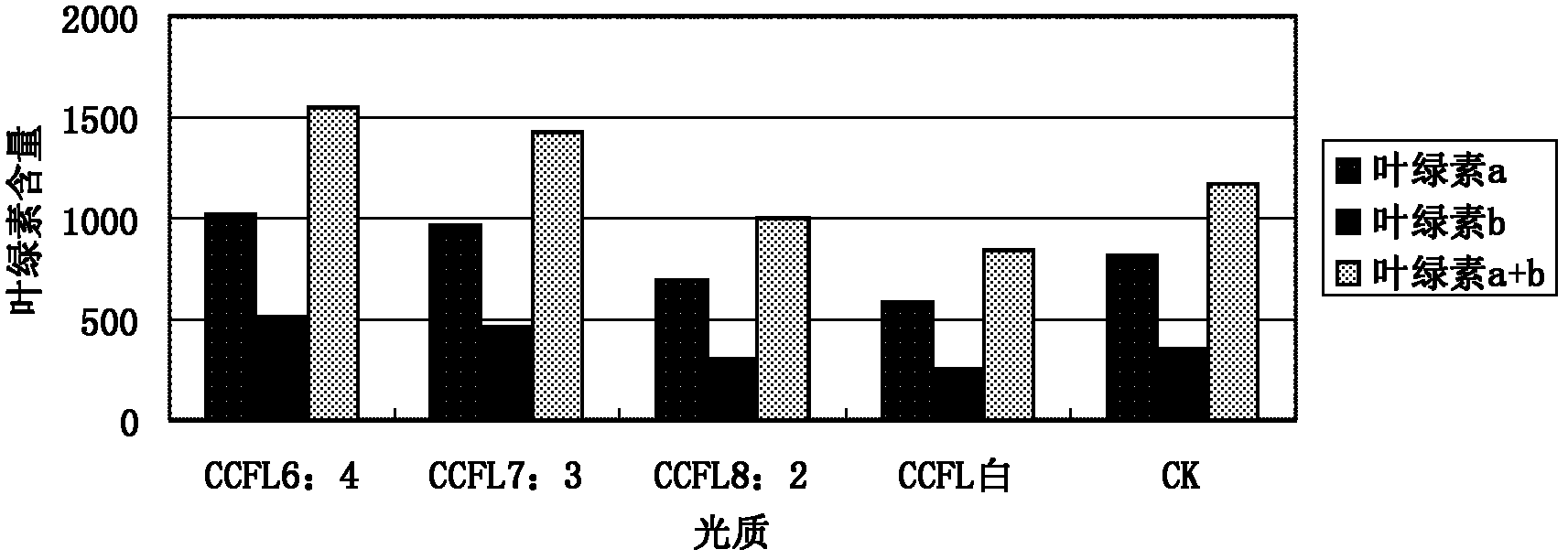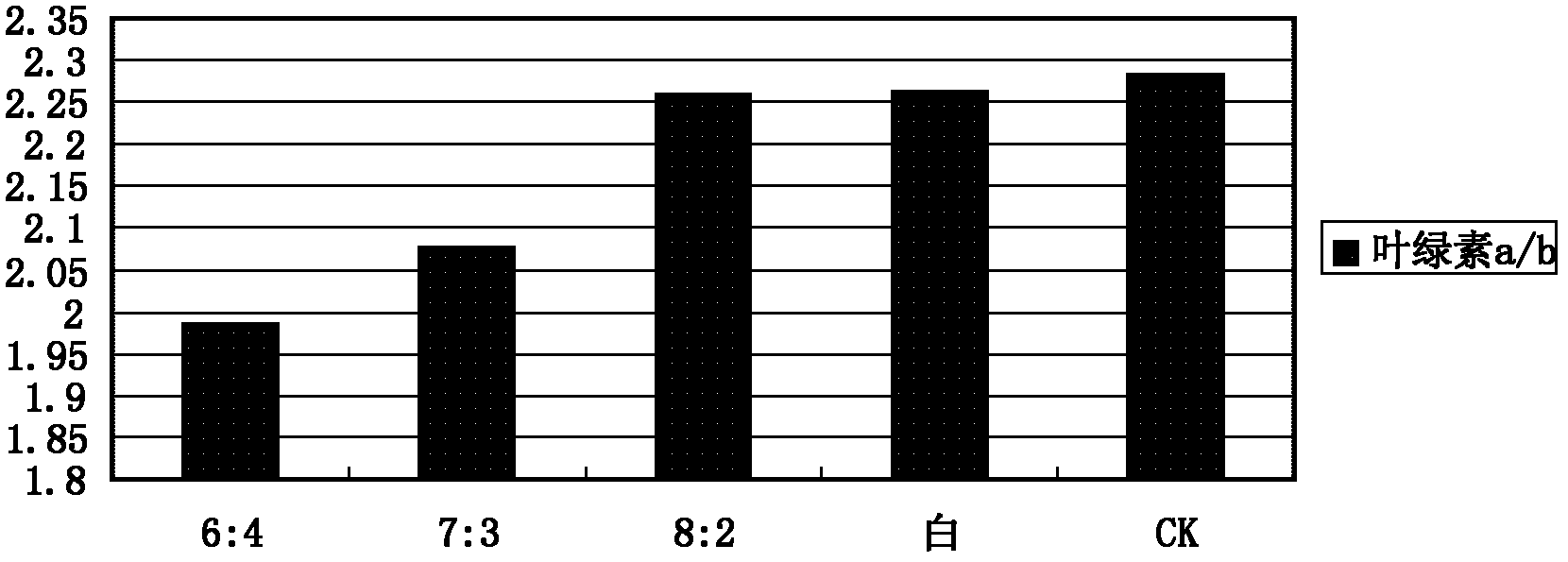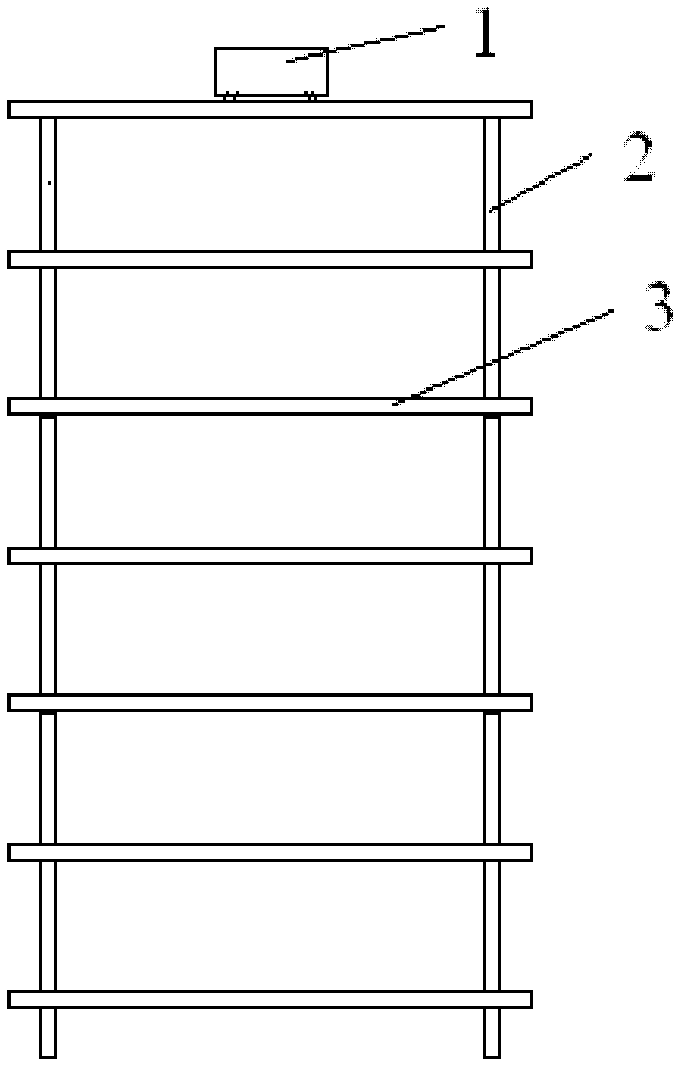Application of CCFL (cold cathode fluorescent lamp) in plant tissue culture
A plant tissue culture and culture rack technology, applied in the field of new light sources, can solve problems such as no discovery, and achieve the effects of long life, improved energy utilization, and reduced cost
- Summary
- Abstract
- Description
- Claims
- Application Information
AI Technical Summary
Problems solved by technology
Method used
Image
Examples
Embodiment 1
[0023] Hemerocallis "golden baby" was used in the experiment, and a small plant with 2 leaves was used as the test material. The ratio of CCFL red / blue light is 6:4; 7:3; 8:2 respectively, and ordinary fluorescent lamp is used as the control. Use MS + sucrose 30g / L + agar 6g / L as the medium, and adjust the pH value to 5.8. A 100ml Erlenmeyer flask was used as a culture vessel. The culture temperature is 25°C, the light time is 24h / d, and the light intensity is 3500 lux. The test materials were inoculated with 3 plants per container, and 10 containers were inoculated with each of the four treatments of each variety, a total of 30 plants. The actual measured number of plants for each treatment was 15. Repeat the test twice.
[0024] Determination of growth index: the culture time of each treatment is 30 days. Test the growth indicators after 30 days of cultivation in the tube and 30 days after transplanting, including plant height, number of leaves, root number, maximum roo...
Embodiment 2
[0034] The experiment uses the iris "Iris" as the experimental material. Take the plantlet with 2 leaves as the test material. The ratio of CCFL red / blue light is 6:4; 7:3; 8:2, respectively, and the fluorescent lamp is used as the control. Use MS + sucrose 30g / L + agar 6g / L as the medium, and adjust the pH value to 5.8. A 100ml Erlenmeyer flask was used as a culture vessel. The culture temperature is 25°C, the light time is 24h / d, and the light intensity is 3500 lux. The test materials were inoculated with 3 plants per container, and 10 containers were inoculated with each of the four treatments of each variety, a total of 30 plants. The actual measured number of plants for each treatment was 15. Repeat the test twice.
[0035] Determination of growth index: the culture time of each treatment is 30 days. Test the growth indicators after 30 days of cultivation in the tube and 30 days after transplanting, including plant height, number of leaves, root number, maximum root...
Embodiment 3
[0056] Embodiment 3CCFL culture frame
[0057] Such as image 3 As shown, the CCFL cultivation frame includes a frame body 2, and the frame body is provided with a plurality of partitions 3 to form a multi-layer pattern, and the bottom surface of the partition is provided with several CCFL lamp tubes 4 ( figure 2 ), the lamp tube 4 is connected to the controller 1. The controller 1 is used to control and adjust the light intensity of each CCFL.
[0058] CCFLs are arranged in an orderly manner. Considering the adjustment and use of red and blue light, it can be arranged according to the 7:3 ratio of red light and blue light tubes during installation. When in use, part of the red or blue light tubes can be opened or closed according to needs, and the ratio of red and blue light can be adjusted. By adjusting the light intensity, the light source can be optimized.
[0059] The above partitions are detachable, and their heights are adjustable, and the distance between layers c...
PUM
 Login to View More
Login to View More Abstract
Description
Claims
Application Information
 Login to View More
Login to View More - R&D
- Intellectual Property
- Life Sciences
- Materials
- Tech Scout
- Unparalleled Data Quality
- Higher Quality Content
- 60% Fewer Hallucinations
Browse by: Latest US Patents, China's latest patents, Technical Efficacy Thesaurus, Application Domain, Technology Topic, Popular Technical Reports.
© 2025 PatSnap. All rights reserved.Legal|Privacy policy|Modern Slavery Act Transparency Statement|Sitemap|About US| Contact US: help@patsnap.com



